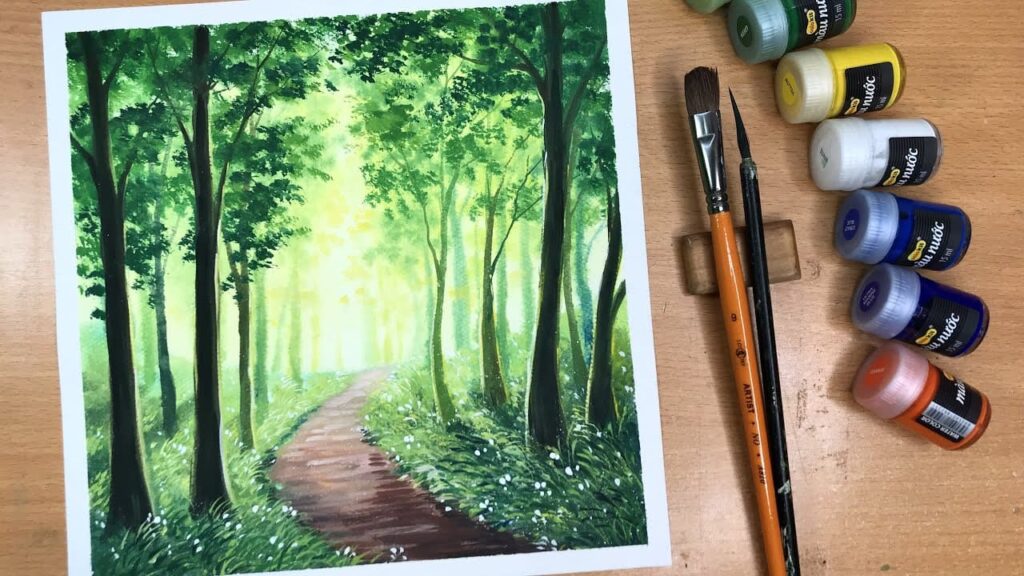A beginner’s guide to painting with watercolor is the key to exploring the vibrant world of art without worrying about your first brushstrokes. If you’re wondering, “How can I start painting with watercolor without making a mess or failing at the first layer?” this article is here to guide you. With the transparent, delicate, and unpredictable nature of watercolor, we’ll take you from the basics to hands-on practice, helping you confidently create your first artistic paintings. Let’s dive into each step in a simple, easy-to-follow way!
Preparing Watercolor Painting Supplies for Beginners: Essential Tools to Start
Before diving into the beginner’s guide to watercolor painting, preparing the right tools is crucial for success. Many beginners make the mistake of choosing low-quality materials, leading to uneven colors or wrinkled paper. Don’t worry—below is a list of essential watercolor supplies for beginners that are cost-effective yet efficient.
Choosing the Right Watercolor Paint and Palette
Basic watercolor paints come in tubes or pans, affordable for beginners. Opt for a set of 12-24 colors from reputable brands for high transparency.
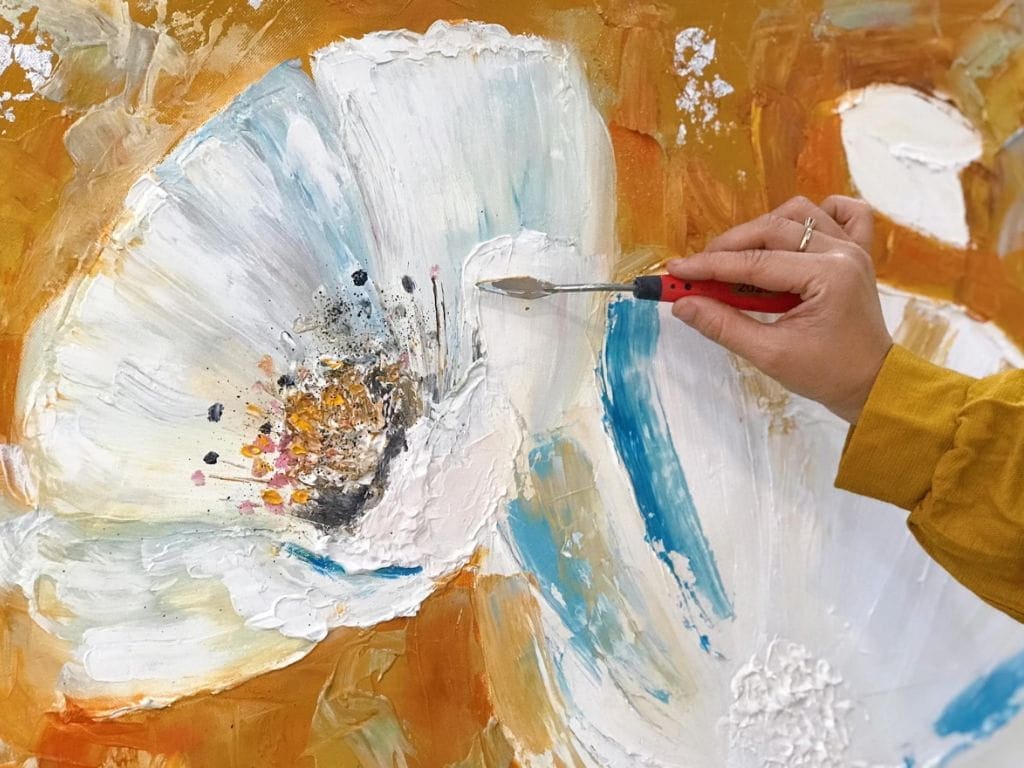
- Types of watercolor: Start with student-grade watercolor for practice, then upgrade to artist-grade for more vibrant colors.
- Mixing palette: Choose a plastic or ceramic palette with multiple wells, easy to clean. If budget is tight, a clean plastic plate will do for now.
Note: Avoid buying overly cheap paints, as they may contain impurities that reduce transparency—the hallmark of basic watercolor painting techniques.
Paper and Brushes – The Foundation of Every Painting
Paper is the most critical factor in the beginner’s guide to watercolor painting, as it determines whether the colors blend beautifully or not.
- Paper: Choose 100% cotton or cellulose paper, 200-300gsm, to prevent wrinkling when wet. A4 size is ideal for beginners.
- Brushes: A set of natural (sable) or synthetic brushes, sizes 0-12. Round brushes sizes 6-8 for large areas, fine brushes for details.
- Other accessories: Masking tape to secure paper, paper towels for absorbing water, and a spray bottle to maintain moisture.
With these beginner watercolor supplies, you can start for less than 500,000 VND. Practice on scrap paper first to get the hang of it!
Basic Watercolor Painting Techniques for Beginners
Watercolor painting techniques are the core of this beginner’s guide to watercolor painting. Watercolor requires control over water and pigment, but don’t be intimidated—we’ll learn step by step. Start with the method of mixing watercolor to build a solid foundation.
Watercolor Mixing and Color Blending Methods
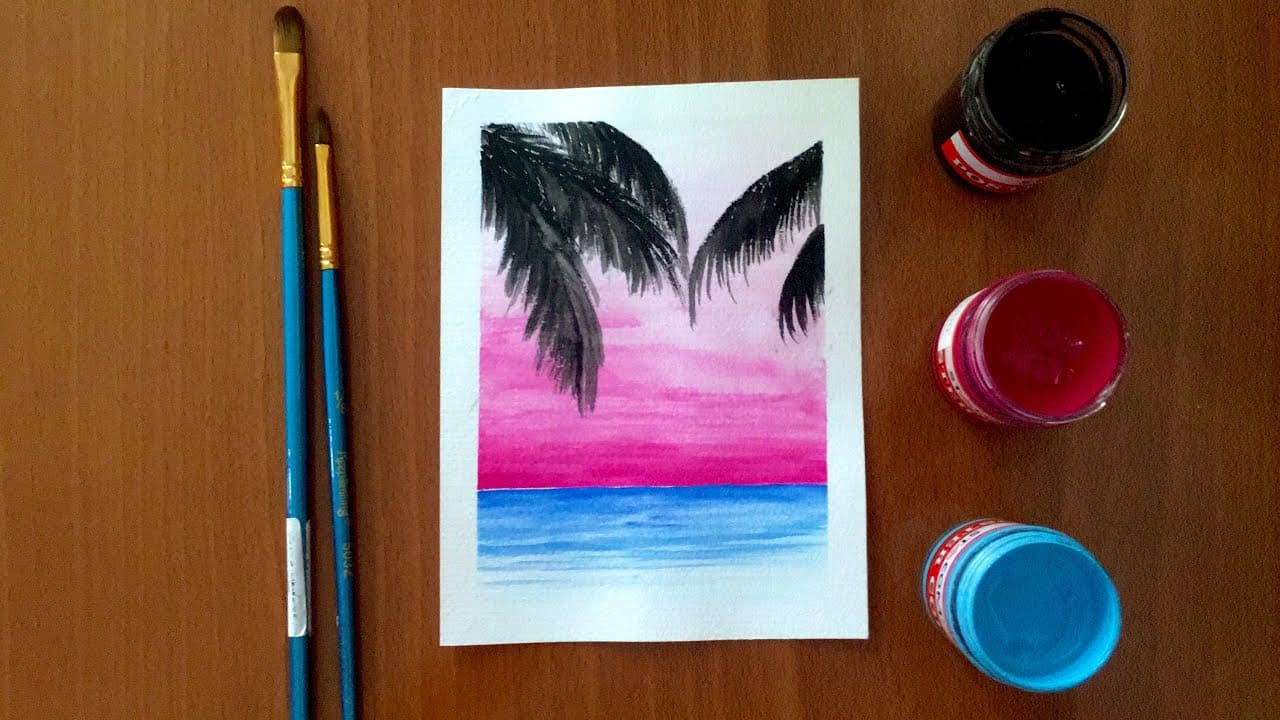
The watercolor mixing method allows you to create countless shades from a basic set. Mix colors in a palette with more water to maintain transparency.
- Mixing light colors: Add more water to the paint for a soft, translucent base, ideal for skies or backgrounds.
- Mixing bold colors: Use less water and more pigment for sharp details like leaves or flowers.
In watercolor techniques, remember this rule: mix enough paint to avoid it drying mid-process. Practice by mixing three primary colors (red, yellow, blue) to create secondary colors like purple or orange.
Wet-on-Wet and Wet-on-Dry Techniques
The wet-on-wet watercolor technique creates natural blending effects and is a popular tip for simple watercolor painting.
- Wet-on-wet: Apply water to the paper first, then dab paint to let it spread. Advantage: Creates smooth backgrounds like skies. Disadvantage: Hard to control if there’s too much water.
- Wet-on-dry: Apply paint to dry paper, then add water to blend. Easier to control, suitable for beginners.
Practice these watercolor techniques by painting an apple: Use wet-on-wet for the red base, then add dry details for the stem.
Layering and Creating Focal Points
Layering is a basic watercolor painting technique to add depth. Wait for the underlying layer to dry completely before applying a new layer to avoid smudging.
- Creating focal points: Use bold colors on wet areas to let the paint spread, creating effects like blooming flowers or falling leaves.
- Note: Always start with lighter colors and progress to darker ones to maintain transparency.
With these watercolor techniques, you’ll find that watercolor is no longer “tricky.” Spend 15 minutes a day practicing!
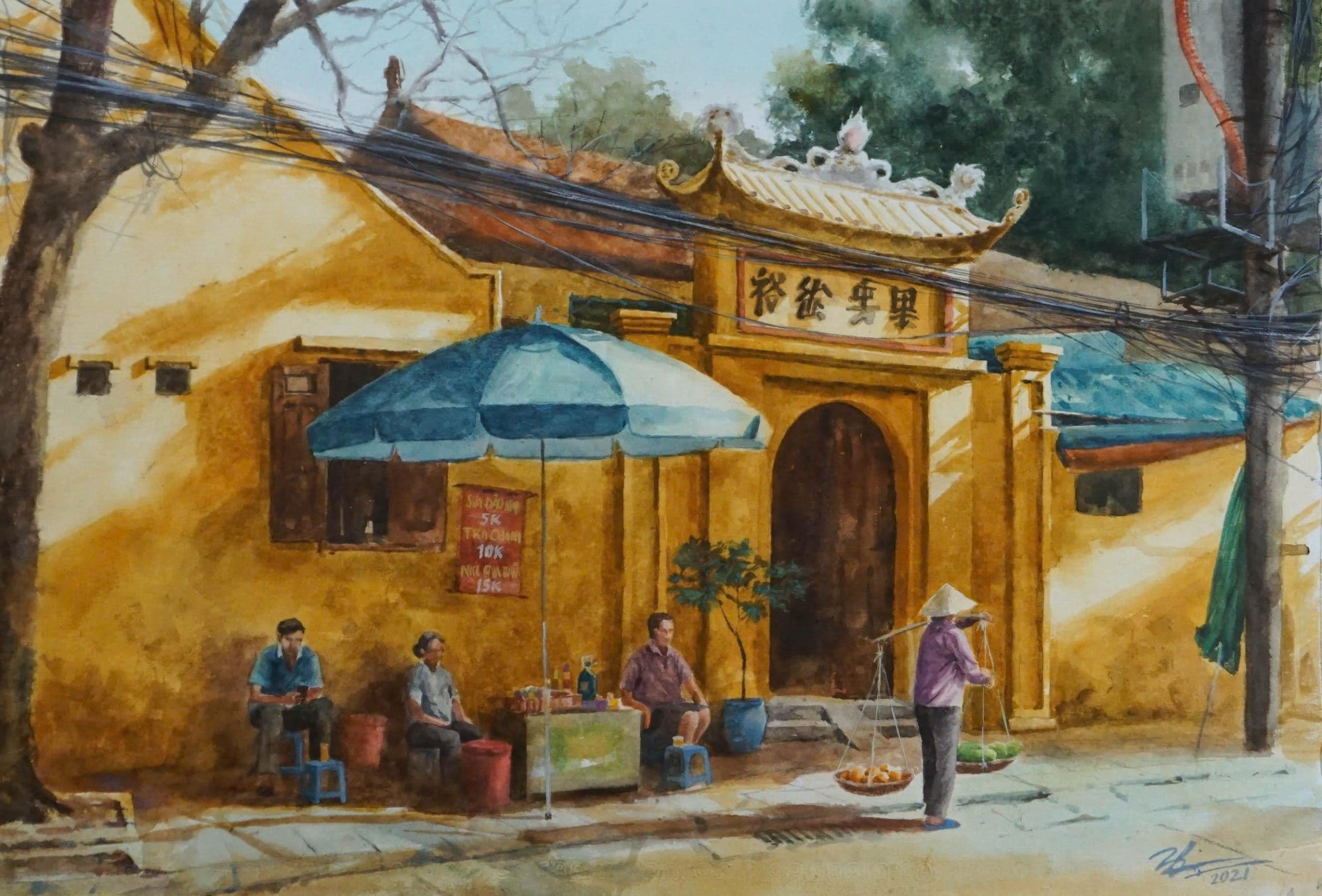
Simple Watercolor Painting Tips to Avoid Mistakes for Beginners
Simple watercolor painting tips will help you overcome initial challenges in this beginner’s guide to watercolor painting. Beginners often face issues like smudging or muddy colors, but with the tips below, you can easily address them.
How to Fix Mistakes in Watercolor Painting
Fixing mistakes in watercolor painting is an essential skill, as watercolor cannot be erased like pencil.
- Wet paint: Use a clean brush to absorb excess water or gently dab with a paper towel to remove incorrect paint. This tip can also create white cloud effects.
- Dry paint: Lightly rinse with clean water, rub with a brush to lift the paint, then blot dry. Note: It won’t remove 100% of the paint, but it’s enough to apply a new layer.
Avoid overusing fixes by planning your color scheme before painting.
Controlling Brush Strokes and Moisture
The brush is your “friend” in simple watercolor painting tips. Learn to vary strokes for diverse expressions.
- Fine strokes: Hold the brush upright and paint lightly for details like tree branches.
- Thick strokes: Angle the brush at 45 degrees and apply more pressure for large areas like leaves.
- Moisture control: Wipe the brush before painting to avoid excess water causing unwanted blending.
Additionally, in easy watercolor painting, use masking tape to cover areas where you don’t want paint to spread to maintain sharp edges.
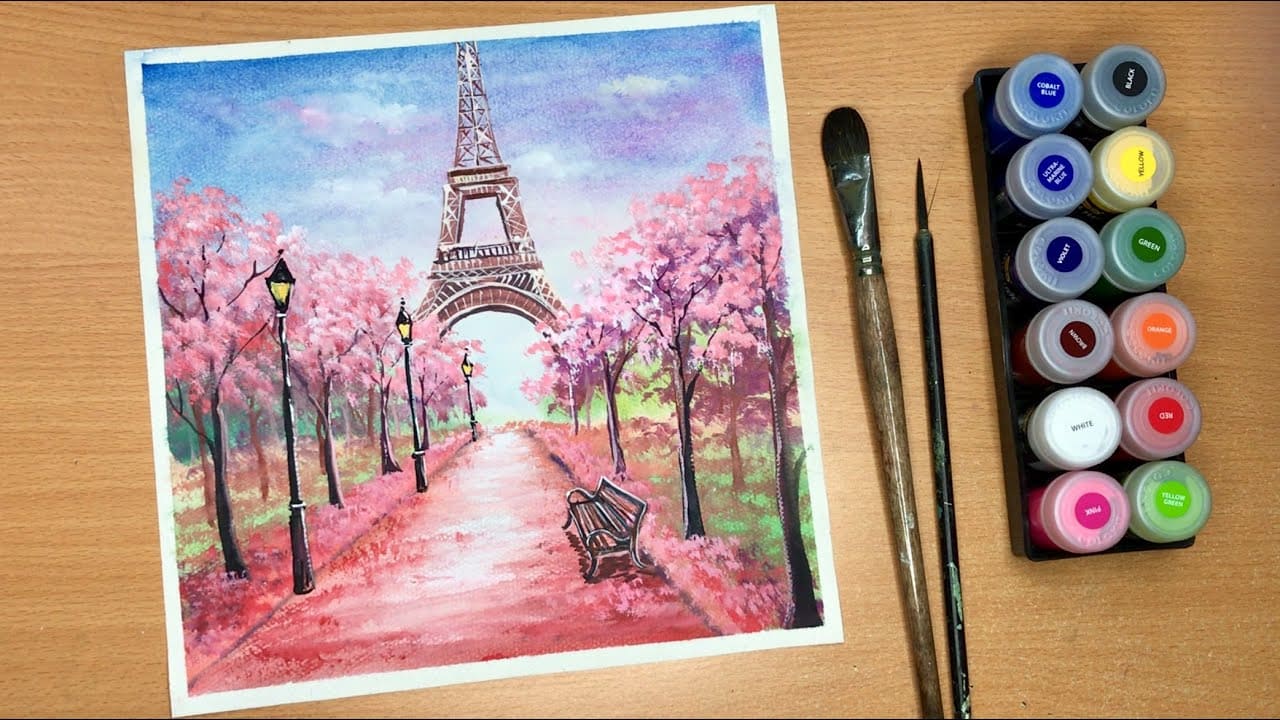
Avoiding Mistakes in Color Mixing and Background
Many beginners mix colors too thickly, causing the painting to lose transparency. Simple watercolor painting tip: Start with a light background and gradually build up to darker tones.
- Base layer: Apply water evenly, then blend from light to dark to avoid streaks.
- Color blending: Mix colors while wet for smooth transitions, or layer when dry to create distinct layers.
By applying these simple watercolor painting tips, you can reduce mistakes by 80% after just a few practice sessions.
Guide to Painting a Simple Watercolor Artwork
Now, let’s put everything into practice with a hands-on watercolor painting guide. We’ll paint a simple flower—perfect for a beginner’s guide to watercolor painting.
Step 1: Sketching and Background
Start with a light pencil sketch of the flower. Then, apply an even layer of water for the background.
- Background: Use the wet-on-wet watercolor technique with light green for leaves and yellow for the flower base.
- Note: Keep the paper secured to prevent water from running.
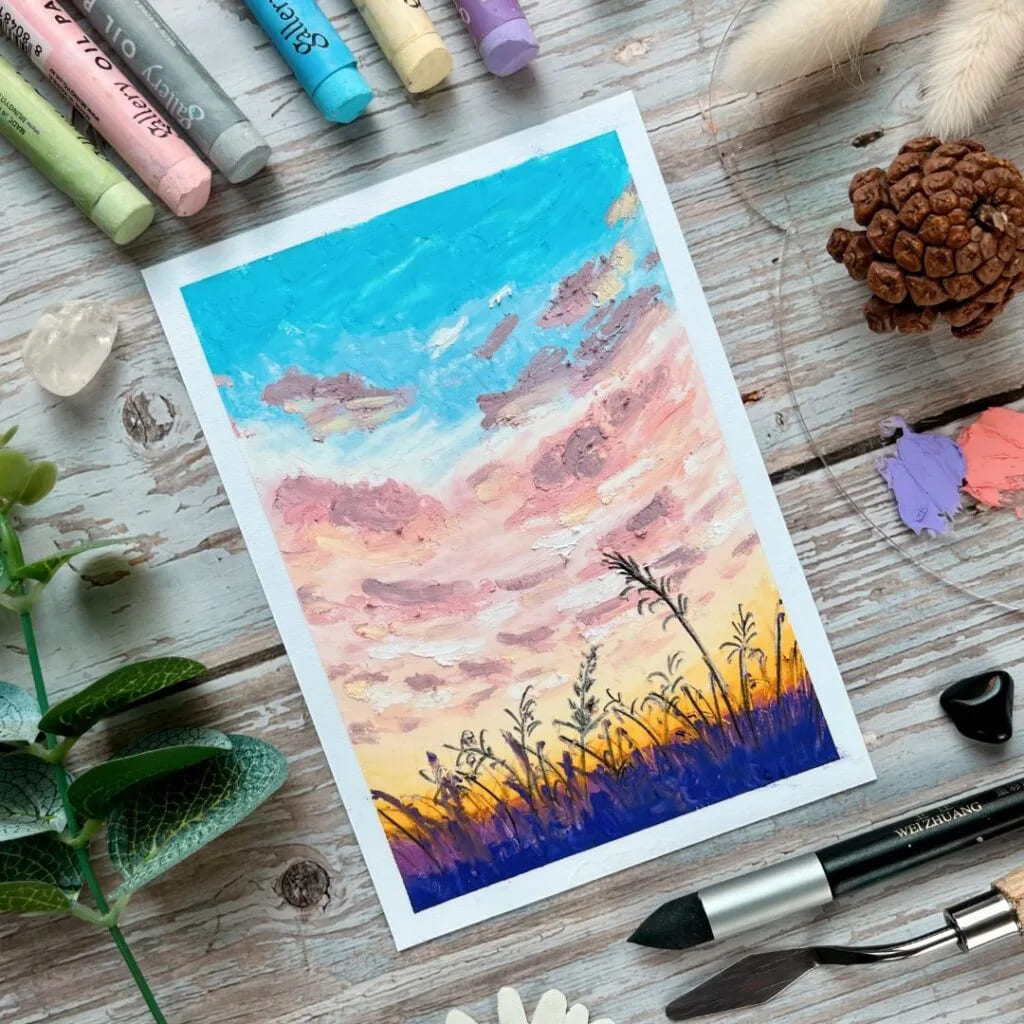
Step 2: Coloring and Adding Details
Watercolor painting guide: Paint from light to dark.
- Painting petals: Mix a light pink and apply wet-on-dry for sharp edges.
- Adding leaves: Layer darker green once the base layer is dry.
- Focal point: Dab yellow into the flower’s center to add depth.
Use the watercolor mixing method to adjust tones if needed.
Step 3: Finishing and Correcting Mistakes
Review the overall painting and use watercolor mistake-fixing techniques if there’s smudging. Sign your work and let it dry naturally.
With this painting, you’ve completed your first basic watercolor artwork. Try experimenting with a landscape theme next!
Practice and Improve Your Watercolor Painting Skills as a Beginner
This beginner’s guide to watercolor painting doesn’t stop at theory—practice is the key. Set a goal to paint 3 pieces per week to progress quickly.
Creating a Daily Practice Plan
- First sessions: Practice basic watercolor techniques like color blending on scrap paper.
- Advanced sessions: Apply simple watercolor painting tips to a chosen subject, like fruit or trees.
Join online communities to share your work and receive feedback.
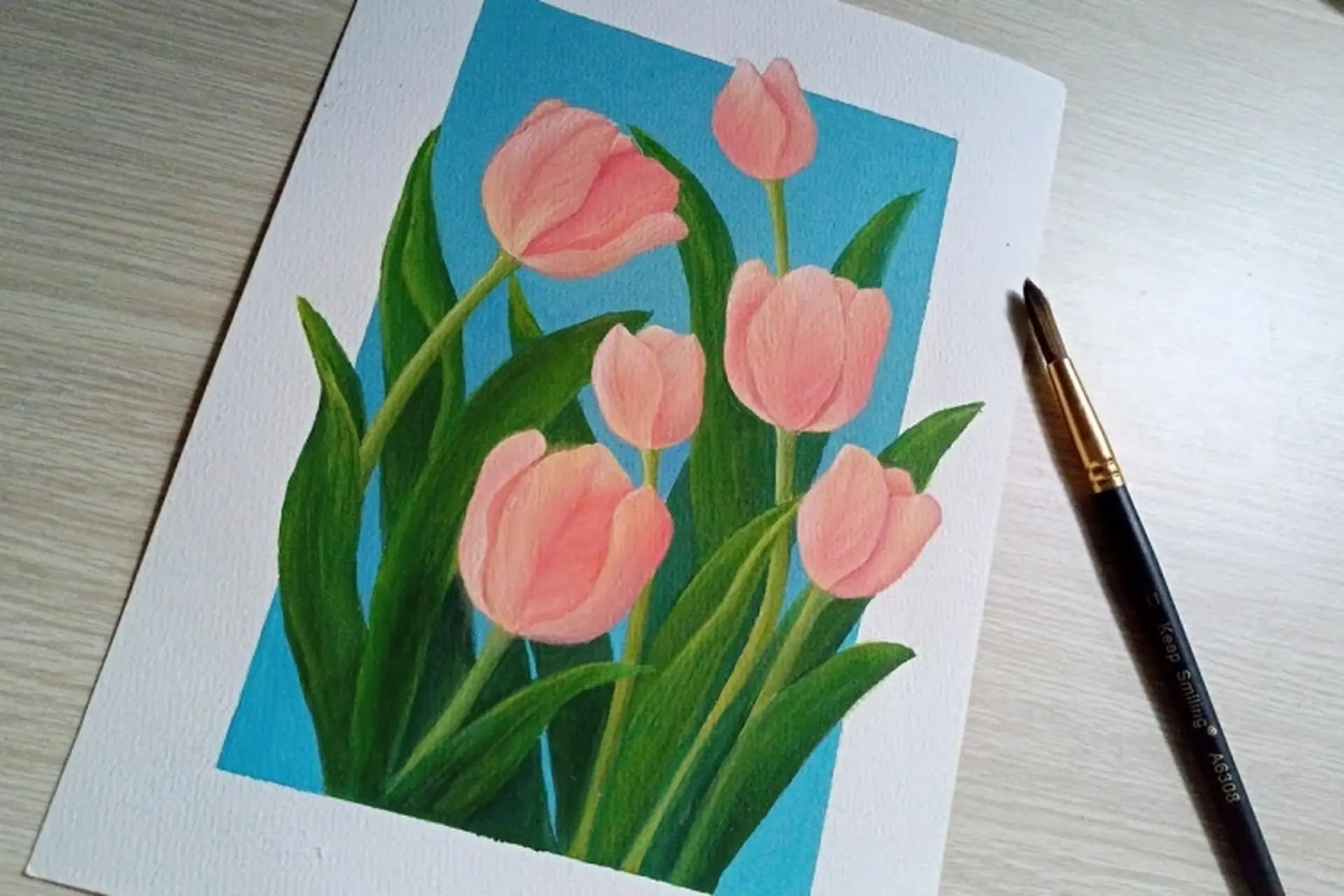
Resources and Further Learning
To make watercolor painting easier, watch tutorial videos on YouTube or read basic watercolor books.
- Recommended book: “Watercolor for Beginners” – translate it into Vietnamese for easier reading.
- Online courses: Look for free classes on watercolor painting techniques.
- Challenges: Paint weekly themed artworks to stay motivated.
Remember, every great artist started from zero. With persistence, this beginner’s guide to watercolor painting will help you create your own masterpieces.
As we conclude this beginner’s guide to watercolor painting, I hope you’re ready to pick up your brush. Start today and share your progress! Watercolor isn’t just about painting—it’s also a wonderful way to relax.

